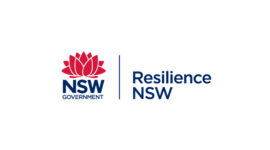Reports of NSW Government’s Mismanagement of Grants Continue

The New South Wales Government’s disaster management agency has come under fire in recent weeks – for its slow response to the flood crisis across Northern New South Wales.
Now, Resilience NSW is facing a fresh round of questioning over $400 million in unspent grant money.
According to reports, Resilience NSW (formerly the NSW Office of Emergency Management) handed out less than $6 million last year in grant money earmarked specifically for building resilience, leaving almost $400 million unspent.
Eye-watering executive payroll
There are serious questions being asked about the efficiency of the agency.
It has also been reported that senior executives – who make up around 15 percent of the total department workforce earned a combined $2.6 million in salaries in the last financial year.
According to figures, the executive leadership structure of the agency means that there is one executive for every three non-executive staff.
Resilience NSW’s annual report reveals it allocated just $525.5 million in grants and subsidies in 2020-2021, despite having more than $925 million to spend.
Of that money, only $375 million was allocated to communities and projects, and the vast majority went to disaster response, rather than resilience planning or preparation.
According to a statement released by the agency, the underspending will be carried into future years. $5.95 million in grants came from a specific program co-funded with the commonwealth and the difference between grant money allocated and money leaving the organisation’s bank accounts is attributed to situations where the agency is still waiting to be invoiced for money spent.
Lack of focus on prevention
Complex accounting aside, there are questions being asked about whether the agency is fulfilling its charter, and its objectives, which are explained on its website as: “Helping communities rebuild and recover after natural disasters like floods, droughts and bushfires, and leading disaster and emergency efforts from prevention to recovery,” and accountability, particularly whether it is delivering any value to taxpayers.
The agency is currently headed up by former NSW rural Fire Chief Shane Fitzsimmons. Resilience NSW was established by former Premier Gladys Berejiklian, and now reports directly to Domenic Perrottet, who it’s understood was not supportive of its inception which occurred during his tenure as treasurer.
Whatever the agency’s future, the fact that its inefficiencies, which offer another example of the Berejiklian government’s general mismanagement of public funds, have come to light now is cold comfort for the thousands of people across Northern New South Wales who remain homeless, or have returned to homes deemed uninhabitable for lack of anywhere else to go. Businesses remain closed in the hardest hit areas and these once vibrant regional communities face a bleak future.
While cleanup and recovery efforts are ongoing, the rebuild is going to take time.
Lismore in particular has long been identified as a high risk flood area. While rebuilding the CBD and surrounding suburbs might be an easier solution than relocating and compensating landowners, it is also an idea that could kill the town.
Many long-term residents as well as the newbies who moved to the area in the past decade, leaving city life behind to take advantage of more affordable housing and a less hectic lifestyle might not feel the same way.
The general community spirit is strong, although on tenterhooks as they brace themselves in the face of current forecasts for more heavy rain. Some areas are already under evacuation orders.
Many business owners have been honest about ‘not having the stamina’ to start again, and there’s also the issue that insurers are now saying that some of the areas could well be classified as ‘uninsurable’ in the years to come.
Political backpedaling and blame shifting
In the weeks since the initial catastrophe the SES has publicly apologised to residents for rejecting help from the ADF prior to the floods which hampered initial rescue and clean up efforts.
The National Disaster Recovery and Resilience Agency (NRRA) has also been forced to defend its decision not to consider Lismore on its list of priority areas for flood mitigation funding.
The politicians at a state and federal level have backpedaled and blame-shifted and in doing so failed to address the obvious – that the social, economic, and emotional toll of this unprecedented natural disaster is something that the community will not recover easily or quickly from, as they may have done so previously, no matter how much money is thrown at the problem.
As Shane Fitzsimmons himself has said: “building more levees or raising the heights of existing levees may not be the “magic bullet”.
Prime Minister Scott Morrison, while steadfastly maintaining a stance of climate denial also recently remarked during a visit to flood ravaged NSW, that “Australia is becoming a much harder place to live.”
Resilience preparation, which is in the hands of these leaders and agency figureheads, needs focus.
There are a range of factors to consider, and it must involve long-term planning and long-term investment along with realistic and sustainable solutions.
Above all, the State and Federal Governments need to restore the trust of those who have been adversely impacted by this catastrophe by providing much less talk and much more decisive action before these regional communities can even begin to look to the future with any confidence.







